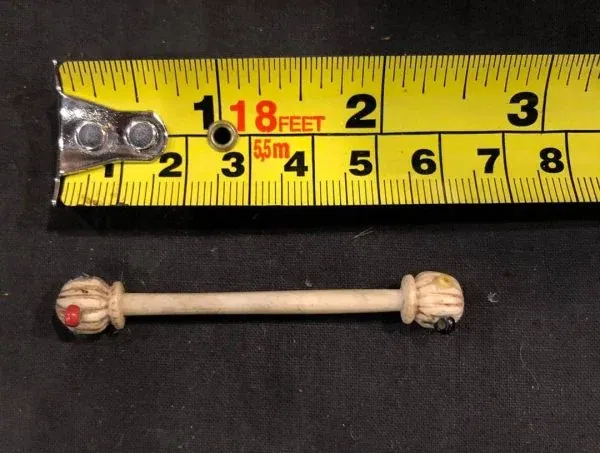Body modification has always been a way for people to express themselves, explore their identity, and connect with personal meaning. One of the most intriguing forms of intimate body modification is the apadravya piercing. Unlike more common piercings such as ears or nose, this particular style carries deep cultural history, specific placement, and a level of uniqueness that sets it apart.
In this article, we will explore what the apadravya piercing is, its background, procedure, aftercare, and why people choose it. The goal is to provide clear, easy-to-understand information for anyone curious about this subject.
Meaning
The apadravya piercing is a type of intimate piercing traditionally performed on men. It is a vertical piercing that passes through the glans, or head, of the anatomy. Because of its position, it is considered both decorative and functional. Many choose it for aesthetic appeal, while others see it as enhancing physical experiences.
This piercing is not something that is widely discussed in everyday conversation, which makes it a very personal and often symbolic choice for individuals who opt for it.
History
The origins of the apadravya piercing are linked with ancient traditions. Some cultural records suggest that piercings of this kind were practiced centuries ago in parts of Asia and the Indian subcontinent. For some, it symbolized masculinity or status, while for others it held spiritual or ritualistic importance.
Today, although cultural practices vary, the piercing has moved into modern body modification communities, where it is appreciated for its boldness and uniqueness.
Procedure
Getting an apadravya piercing involves a professional piercer carefully placing the jewelry in a vertical direction through the glans. The process requires precision and expertise because of the sensitive area involved.
The steps generally include:
- A consultation where the client discusses expectations.
- Preparation of the area with sterilization.
- Marking the entry and exit points.
- Using a hollow needle to create the channel.
- Inserting jewelry immediately to keep the piercing open.
Because of the location, this type of piercing is considered more advanced than many others and should only be performed by a highly experienced professional.
Jewelry
The choice of jewelry for an apadravya piercing is usually a barbell. The length of the barbell is chosen carefully to allow space for swelling during healing. Over time, some may choose different materials or styles, but surgical-grade metals are most common at the start.
Jewelry choice plays a big role not only in comfort but also in the healing process. A well-fitted barbell reduces irritation and allows the body to adjust naturally.
Pain
One of the most common questions about the apadravya piercing is how painful it is. Pain is subjective, and everyone experiences it differently. However, because the piercing passes through sensitive tissue, it is generally considered to be more painful than standard piercings.
That said, the moment of piercing is quick, and many find the healing discomfort more challenging than the initial procedure. Professional piercers often emphasize preparation, calm breathing, and aftercare as key factors in managing pain.
Healing
Healing for an apadravya piercing usually takes longer compared to surface piercings like the ear. On average, it can range from four to six months, with full recovery sometimes taking longer depending on the individual.
During healing, it is essential to:
- Keep the area clean with recommended solutions.
- Avoid activities that may cause strain.
- Be patient and consistent with aftercare routines.
Because of its location, the piercing is exposed to friction and movement, so extra attention is necessary to prevent irritation or infection.
Aftercare
Aftercare is the most important part of living with an apadravya piercing. A few simple but effective steps include:
- Washing hands thoroughly before touching the area.
- Using saline solution to clean the piercing twice daily.
- Avoiding harsh soaps or alcohol-based cleaners.
- Wearing loose clothing during healing to reduce friction.
- Following the piercer’s professional advice closely.
Good aftercare reduces risks and ensures the piercing heals properly without complications.
Risks
As with any body modification, the apadravya piercing comes with risks. Potential issues include:
- Infection if aftercare is neglected.
- Prolonged swelling or irritation.
- Migration or rejection of the jewelry.
- Sensitivity during healing that affects daily activities.
These risks highlight why it is important to select a reputable piercer and to follow all aftercare instructions carefully.
Reasons People Choose It
Every person has a unique reason for choosing an apadravya piercing. For some, it is purely about personal expression or body aesthetics. Others value the cultural or historical connection. Some also report enhanced intimacy, which can be a motivating factor.
Ultimately, the decision is deeply personal and often tied to confidence, individuality, or curiosity about body modification.
Final Thoughts
The apadravya piercing is not an everyday choice, but it remains one of the most distinctive forms of body modification. With roots in history, detailed procedure, and unique aftercare needs, it stands out as both a challenge and a statement.
Anyone considering this piercing should approach it with careful thought, research, and the guidance of an experienced professional. By doing so, they can embrace not only the aesthetic value but also the personal meaning it may carry.
